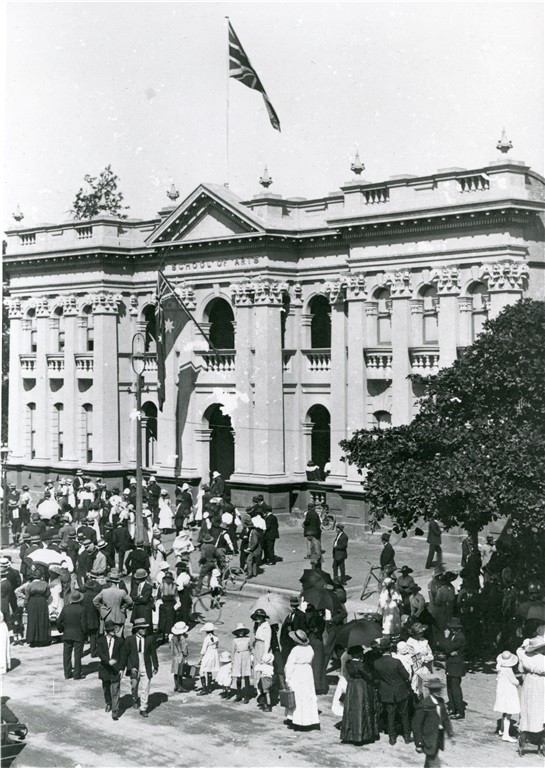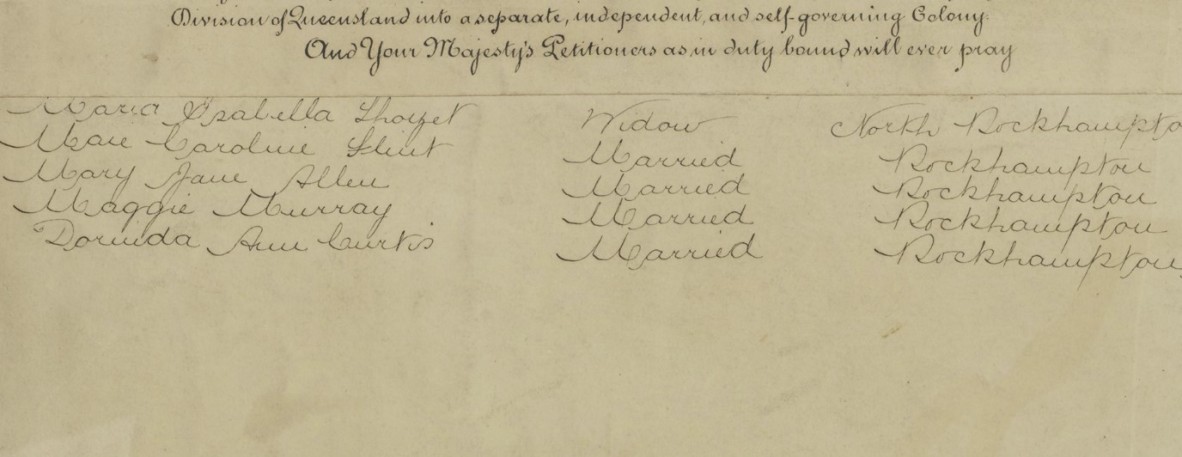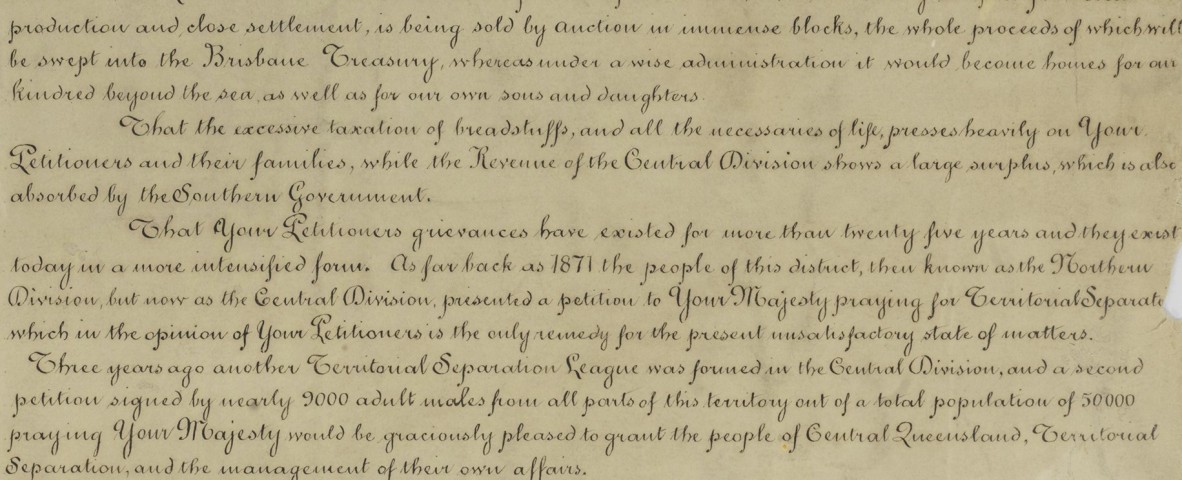Rockhampton Revolutionaries: Dreams of secession in Central Queensland
By Anna Thurgood | 21 October 2021
The move by the north to secede from the rest of the state first gained attention and notoriety in the 1860s but petered out due to internal squabbling between the towns of North Queensland. A much more serious attempt came twenty years later when the Central Queensland Territorial Separation League was established in 1889. They were joined by the women with wives, mothers and sisters supporting their men and their region by forming the Women’s Central Queensland Territorial Separation League.
The inaugural meeting was held at the Rockhampton School of Arts in October 1892, with 200 women in attendance. The women resolved to add support to help influence the movement for a new separate state to be formed. Their main objective was to create a large petition to send to Queen Victoria herself who alone had the power to create a new colony in Australia.

Rockhampton School of Arts building, the site of the first meeting of the Women's Central Queensland Separation League in 1892. Negative no. 650, Rockhampton Regional Libraries.
The petition’s introductory text lays out their grievances, describing Queensland’s vast size as being
twelve times the area of England and Wales, being larger than France, Germany, Spain and Portugal combined...
and that the administrative centre of the state was so far removed from the rest of the huge state, leaving Central Queensland
...not only retarded but used as a source of revenue for the aggrandisement of Brisbane and Southern Queensland.
They were also aggrieved about the wealth created in their region being absorbed by the distant State Government, as well as the
excessive taxation of breadstuffs and all the necessaries of life...
The women who drove this petition were unpaid and all the canvassers were volunteers. They went to extraordinary lengths to collect signatures, in a pre-digital age and at a time well before fuel-driven transport existed. One woman, Margaretta Ramm, described in the Rockhampton Morning Bulletin a particularly difficult day when she rode 27 miles alone for just seven signatures.
While the day had started pleasantly enough, she later encountered a fierce storm. The torrential rain saw her horse bogged ‘over the fetlocks’ at every step and, barely able to see a few yards ahead, they both became hopelessly lost with night beginning to fall. Luckily, the horse ran into a wire fence which luckily led Margaretta to a homestead.

Excerpt from the petition showing the names of several women, their marital status and place of residence. Central Queensland Separation League petition, 1892-1893. OM86-05. John Oxley Library, State Library of Queensland.
In only a couple of months, the group collected the signatures of around 4,000 women, along with their marital status and area of residence. All signatories were over the age of 21. A later report from the Committee stated that if the age had been lowered to 18 years, another 2,000 signatures would have been collected. The resulting scroll, with all names transcribed and certified, measures over 33 metres.
The petition was presented to Queensland’s legislative assembly in early August 1893. It contained a letter addressed to the Governor of Queensland and one to the Marquis of Ripon, the Secretary of State for the Colonies. Attached appendices included legislation related to separation of Australian territories and financial information relating to income, expenditure and the ability to pay for self-government. The Governor, Sir Samuel Griffith, while acknowledging the statements and arguments were “framed with much industry”, dismissed the claims out of hand, as he had with the men’s petition. The British, loathe to become involved in colonial politics, preferred to maintain the status quo. They deferred to the Queensland parliament to refer the matter if needed, something that was an impossibility.

Excerpt from the petition, outlining the arguments for secession to Queen Victoria. Central Queensland Separation League petition, 1892-1893. OM86-05. John Oxley Library, State Library of Queensland.
The Separatists were so convinced separation would be a reality a beautiful large home Kenmore House, constructed by ‘Honest’ John Ferguson in 1894, was built for the Governor of the new colony of Central Queensland. But it wasn’t to be. The house still stands today, part of the Mater Misericordiae hospital complex.
Secession of the north of the state from the south is a revolutionary idea, yet survives to this day. Perhaps surprisingly, the reasons remain the same. Politicians such as Townsville Mayor Jenny Hill and Robbie Katter, MP for Mt Isa, represent a large number of north Queenslanders who feel their interests are not well-represented by the far-away capital of Brisbane in the south east corner. Their resource-rich areas provide a significant contribution to the state’s financial position which they feel is not returned in public funding. Further fuelling the debate, only two of Queensland’s senators are regionally based.
This petition has not yet been digitised. With the support of generous donors through the Queensland Library Foundation’s Crowd Giving campaign, digitising this extraordinary piece of Queensland’s history will unlock rich historical information. The names contained within the scroll would be searchable, unlocking more incredible personal stories of Central Queensland women such as Margaretta Ramm, who almost lost her life gathering signatures, as well as for more straightforward purposes such as family history research. Most importantly however, digitisation also ensures the scroll will be preserved in perpetuity so future generations of Queenslanders can access this important piece of our history. Perhaps it will reawaken revolution in Central Queensland.
Other Blogs: Central Queensland Separation League Petition 1892-1893: treasure collection of the John Oxley Library
Comments
Your email address will not be published.
We welcome relevant, respectful comments.